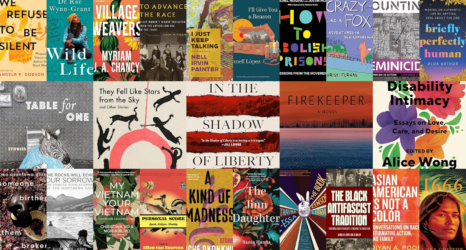Black Wings, which was first published in Pakistan by Alhamra Publishing (2004) and published in the U.S. for the first time this year by Veliz Books, explores the relationship between a mother and daughter struggling to connect with each other—after 17 years of family turmoil and in the midst of their own country’s upheaval post 9/11.
With global violence rising since 9/11, the historical and present content in Sehba Sarwar’s latest is relevant now more than ever. The author talked to Ms. about her novel, the importance of storytelling and the urgency of our global history.
Your book tells the stories of a mother and daughter, Laila and Yasmeen. Why was it important to you to include both perspectives in the story?
I chose to use first-person to write the novel, so it made sense to have the text move between the voice of Yasmeen, the protagonist, and Laila, her mother. At the start of the novel, Yasmeen is angry and shut down—so one way to reveal her mother, Laila’s, character was to offer Laila’s perspective via first-person and through stories that she shares to connect with her grandchildren.
If I had chosen to write from Yasmeen’s perspective, readers would have had difficulty understanding the complexity of Laila’s life—since Yasmeen doesn’t know her mother’s story. The two women, mother and daughter, connect with each other as well as with the children through stories, real and imagined, so it made sense to switch voices.
In this political climate, how do you think Yasmeen and Laila’s reconnection would have changed?
The scenes that open Book One and Book Two are set at airports and airplanes. One way in which the world has changed since 9/11 is the way we fly, and the fear that’s associated with journeys—which were once exciting because passenger airplanes took us to new places, but now, airplanes are viewed as weapons, which perhaps they always were, since warplanes have been used to drop bombs for almost a century.
As a writer, I create work that reflects the world around us. However, I offer details and allow readers to make up their own minds about the stories that I share. From my perspective, it made sense to give a glimpse of rising global anti-Muslim and anti-immigrant sentiments, but I didn’t want to focus exclusively on those issues. Humans are complex, and Yasmeen is more than a “Muslim immigrant,” so in that sense, I don’t think the novel would be that different if it were to open in 2019.
Anti-Muslim and anti-immigrant movements are on the rise around the globe. Perhaps the difference would be that I wouldn’t have dwelled on the changes around flying and journeys—because now, 18 years after 9/11, we’ve become accustomed to the discomfort of flying.
Storytelling means so much to Yasmeen—and the first story from home that she shares with her children is about war.
Sometimes stories live within us, and then the events around us stir up narratives that we think we have forgotten. Certainly, Yasmeen is dealing with trauma as she deals with a changed post 9/11 world. The story that she shares with her children is one that I remember from my childhood.
Over the years, I’ve done a lot more research into that short war between India and Pakistan, and have learned about the genocide that the Pakistani army conducted in Bangladesh before India intervened. When Yasmeen feels compelled to share a story with her children, she narrates the circus of war, one that is created by men (sometimes women) in power and uses the opportunity to remind her children of a message that the milkman tells her and her twin when they are children: “These are the wars of big men. The voices of milkmen, electricians, drivers don’t matter. These men will fight and kill our brothers no matter what. The Bengalis want freedom. They are not our enemies.”
Do you think most of your readers in the U.S. will be surprised to know there was turmoil before 9/11?
Outside of South Asia, many people don’t know the history of the region. During the 1947 Partition when India and Pakistan became separate countries and the British colonizers left the region, more than one million people were killed or died, and 10 million people migrated across the newly-carved borders—the largest mass migration in human history. After Partition and prior to 2000, Pakistan and India engaged in war several times, and the region remains volatile because of many reasons, including the situation in Kashmir.
The U.S. has been involved in the conflict: Back in 1979, after the Russian invaded Afghanistan, the U.S. government sent arms to Afghanistan via Pakistan’s right-wing military general. Many people don’t know this history because prior to 9/11, the average person in the U.S. didn’t know about the existence of Pakistan—and today, because of 9/11, people have a warped view of the country, which is why I enjoyed writing Book Two that begins in my home city, Karachi, and ends in Pakistan’s northern regions.
How important was storytelling for you growing up?
I grew up in Pakistan listening to stories told by my mother, my grandmother and other family members. Television only entered my life when was about five or six years, and even then, my siblings and I would watch a 30-minute show after which the television would turned off. My siblings, cousins and I would invent and act out stories; at night, elders would share stories. A Thousand and One Nights was part of our culture—a narrative in which the protagonist Scherezade saves her own life by spinning stories.
I began Black Wings through writing stories and then created characters, Yasmeen and Laila, who told the stories as well as who became full-blown characters through the narratives and memories they share.
Do you call your own mother Amman?
I call my mother “Ammi.” In Urdu, just like in English (and most languages), there are multiple ways to address elders. I chose to have Yasmeen refer to her mother as “Amman” just to differentiate for myself as well as for readers that though elements of Yasmeen’s life reflect my own, Yasmeen is not me. She is a fictional character who has lived her own journey.
Tell us about the cover, and what it means to you.
The images used for Black Wings’ book cover are drawn by my 14-year-old daughter, Minal Saldivar, who created images invoking the style of Mughal miniatures without even knowing that she was doing so.
One afternoon, when we were in Karachi drinking tea at the home of Zohra Yusuf, who was my editor at my first job as subeditor at age 19, Minal was getting bored. This was about four years ago, and Minal didn’t have any gadgets, so I handed her a 5”x4” notepad and she created ink drawings of women with children, pets and homes. I saved the drawings and entrusted my artist friend Oskar Sonnen to help me find a way to frame the images. Instead, he created a collage.
When my Veliz Books editor asked if I had ideas for the cover, I sent her the collage, and that was it! I worked closely with Veliz Books to make sure that the mist in the novel reappears in the cover. I work intuitively, and I hadn’t thought about what the cover symbolizes, but now that you’re asking, I can say that the image symbolizes a web of women’s stories, and intergenerational connections.





